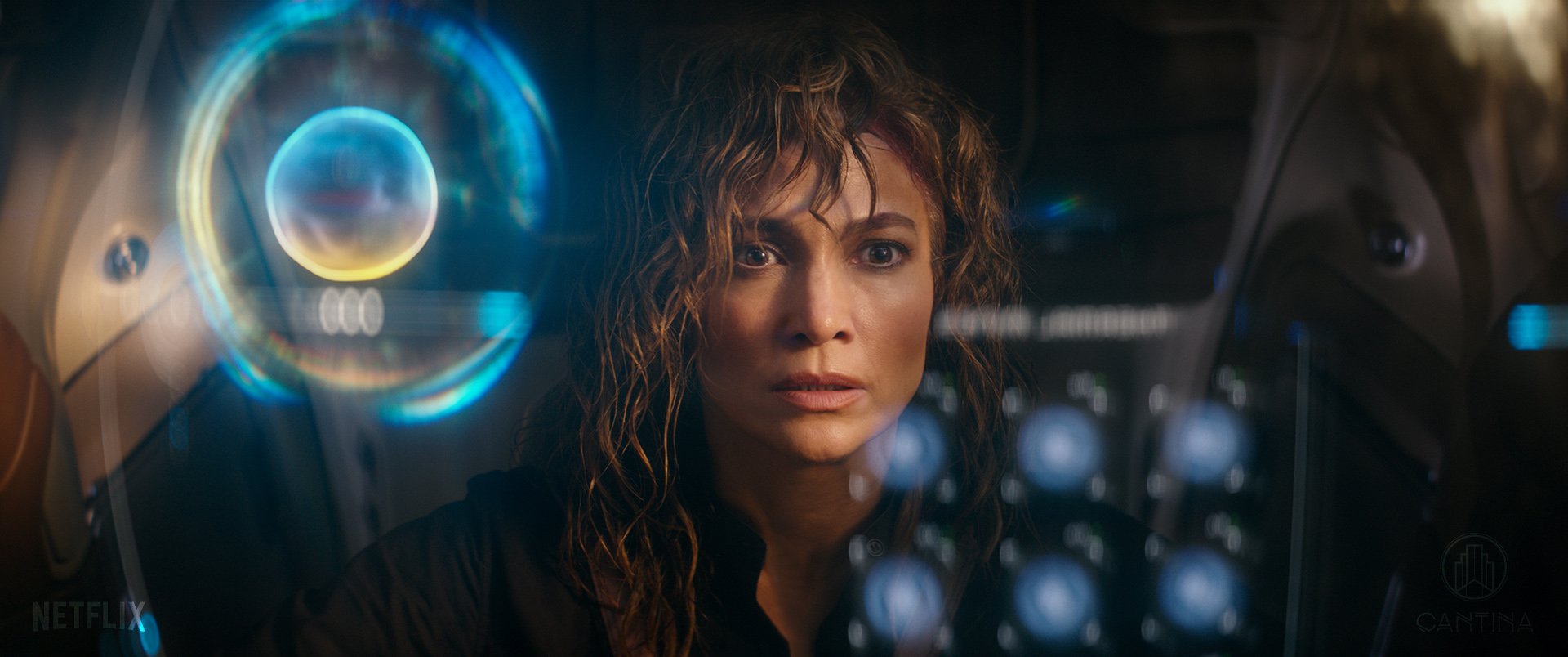
Atlas
Hologram Design | CGI | Compositing
This enabled us to immediately start producing work since our pipeline seamlessly ingested their files. We were additionally tasked with doing look development on a number of other sequences including two pivotal scenes at the beginning of the movie, which included CG element rendering, animation and integration, set extensions, graphics look dev, and final compositing.
As Atlas moved into post-production we were excited to continue our collaboration with Blondel Aidoo and Willie Marlett. This was also our first time working with Director Brad Peyton and VFX Supervisor Lindy De Quattro so we were eager to dig into conceptual and compositing work. For a number of sequences that we were assigned, we were able to begin our work using a framework of designs and project files from our partners, Territory Studio.
Atlas Reel
Atlas Apartment
Consumer-Based Holograms
When designing the consumer-based holograms like the augmented reality TV wall, coffee machine hologram, alarm clock and chess game hologram, the goal was to make them both sleek and functional, integrated with practical objects. But they’re also designed to be flashy and exciting enough to draw shopper’s eyes in a store and beat out competitors.
For the AR TV wall, it was very creatively open-ended from the start. The original pre-visualization consisted of a wall of screens and graphics. It felt futuristic and tech-y, but not consumer-based and functional, something you might want in your living room filling up your entire wall. Our design shifted toward a subtle hologram, one that seamlessly blended into the empty wall, using shapes and color from the home's interior style, to become both a living part of the personal decor and also a way of engaging with TV content. The technology behind the hologram projection is an allusion that tricks the eyes into seeing depth on the blank wall, depending on viewing angle; a sort of augmented reality projection.
Set Extension, CG and Hologram Composite
The Arc 9
Atlas Mech Suit
In contrast to the consumer-based holograms of Atlas’ apartment, the military tech holograms focused more on clarity of data. We began our work with GFX packages developed by our friends at Territory Studios. This became the framework for all of the graphics seen inside Atlas’ Arc Suit.
Smith
Smith began with a solid framework established by our partner Territory Studios. Because Smith was designed to be interactive in the way he speaks and moves, we needed to work closely with editorial to ensure that he was perfectly synced. If the dialogue was re-recorded or was shifted in the edit, we needed to render Smith quickly with those changes. To ensure that Smith was handled efficiently, we built a long scene-length sequence in After Effects that included each line of dialogue in its correct place. From there we rendered individual shot length Smith elements. This also meant that Smith’s overall movement and animation would be both unique from shot-to-shot and have accurate continuity across the entire sequence.
Do you prefer pie or cake?
Smith
Additional Holograms
Design | Anim | CG | Compositing
Credits List
Client Netflix
Visual Effects Supervisor Aaron Eaton
Visual Effects Producer Sean Cushing
Visual Effects Co-Producer Rick Baumgartner
Visual Effects Coordinator Jake Saar
Computer Graphics Supervisor Julianne Dome
Designers Ramiro Galan, Robyn Haddow, Blaise Hossain, Andrew Jarvis, Nate Jess
Compositors Wes C. Caefer, Matt Eaton, Lev Grayson, Justin Hemsley, Dustin Hudson, Sam Richardson, Rylie Quinn, Ryan Uhrich



















